Deep Cleaning Couches at Home: A Complete Guide
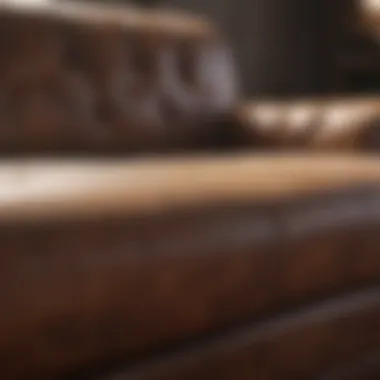
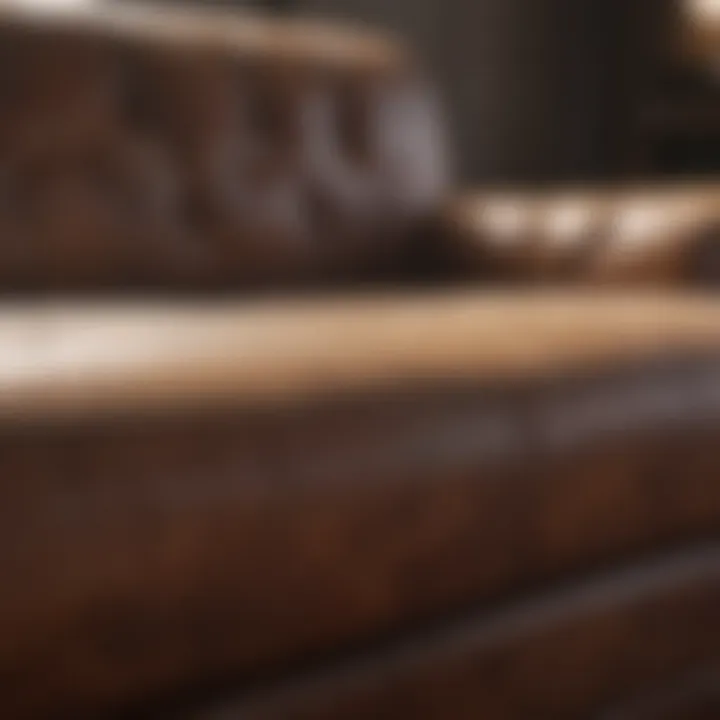
Intro
If you've ever sunk into your couch only to find it feels a bit less fresh than you'd like, you're not alone. Couches, while a centerpiece of comfort in many homes, can gather dust, crumbs, and stains over time. Understanding how to deeply clean these essential pieces of furniture is more than just about aesthetics; it's crucial for maintaining a healthy living environment.
Deep cleaning a couch can seem like an uphill battle, particularly if it's upholstered in tricky materials like velvet or leather. But fear not; with the right knowledge and tools, it can be a manageable task. This guide aims to provide you with detailed insights on effective cleaning methods, recognizing the different upholstery types, appropriate cleaning agents, and specific techniques that will breathe new life into your sofa.
Throughout this guide, we will delve into the intricacies of various couch materials, how to choose the right products—think along the lines of environmentally-friendly agents versus powerful commercial ones—and practical tips that will make this chore less daunting. Ultimately, you’ll arm yourself with the know-how to tackle routine maintenance, spot-clean those pesky stains, and ensure that your couch remains a comfortable and inviting part of your home.
By the time you finish reading, you’ll be ready to face your couch with confidence, knowing exactly how to keep it looking as good as new. Let’s roll up those sleeves and get ready to transform your living space!
Foreword to Deep Cleaning Your Couch
When it comes to home maintenance, we often overlook the humble couch. It’s where we unwind after a long day, gather with family, and sometimes even let snacks accumulate in the cushions. However, neglecting to deep clean this central piece of furniture can have more consequences than just unsightliness. Over time, couches accumulate dust, dirt, and allergens, not to mention the odd stain from spilled drinks or food. So why should you dedicate time to this task?
The significance of deep couch cleaning lies in its dual benefits: comfort and health. A clean couch not only enhances the aesthetic appeal of your living space but also contributes to a healthier home environment. Dust mites, pet dander, and other allergens thrive in the fibers of your upholstery. By deep cleaning your couch, you reduce these irritants, making your living space more welcoming for everyone, especially those with allergies.
Consider this: A couch is not just a piece of furniture; it's an investment. Depending on the materials and craftsmanship, it can carry a hefty price tag. Regular deep cleaning can prolong its lifespan, maintaining the fabric or leather in good condition. Think of it like changing the oil in your car; if you let neglect set in, you might be looking at costly repairs or replacements down the line.
Another critical aspect of deep cleaning your couch is the psychological impact it has. A clean, fresh couch invites relaxation and enhances comfort. Who doesn’t feel better sinking into a couch that smells nice and looks polished? This emotional uplift shouldn't be brushed aside; it plays a substantial role in your home’s ambiance.
Additionally, deep cleaning is especially pertinent for upholstery materials. Different materials have different cleaning preferences, and understanding these choices is crucial. Take fabric couches, for instance; they may harbor all sorts of odors and stains that necessitate specialized cleaning methods. Conversely, leather requires a gentler touch that might include conditioning treatments every now and then.
In summary, embarking on a journey to deep clean your couch isn't just about aesthetics; it's an investment in health, comfort, and longevity. By understanding the importance of this task, you’ll be better equipped to create a living environment that's not only tidy but also enjoyable for you and your guests.
"A clean couch is a happy couch. Not just for show, but for the peace of mind it brings to a home."
In the next sections, we'll dive deeper into the specific materials used in couches, the tools necessary for effective cleaning, and practical tips for restoring your upholstery to its former glory.
Understanding Couch Materials
When it comes to deep cleaning your couch, knowing your materials is nearly half the battle won. Each fabric or material requires its own cleaning strategy. Understanding the couch's construction has benefits that go beyond just aesthetics. For instance, different fabrics can absorb stains and odors differently, impacting how frequently you might need to clean them. Moreover, using the wrong cleaner on a particular material could leave permanent damage, making grasping the nuances vital for any homeowner.
Identifying the type of upholstery on your couch allows you to pick not only the right cleaning agents but also preventative measures that can prolong the life of your seating. Some materials are far more forgiving than others when it comes to spills and general wear. Here’s a closer look at the primary fabric types.
Fabric Types
Fabric couches come in a myriad of choices, each with distinct characteristics. Common types include:
- Cotton: Soft and breathable, cotton can be washed easily but tends to stain.
- Polyester: Known for its durability, it resists fading and stains moderately well.
- Linen: Luxurious but often requires more delicate care as it wrinkles easily and can trap dirt.
Fabric types can affect your couch's overall durability and maintenance needs. Opting for heavier fabrics or stain-resistant options can save you a headache down the line, especially if you have children or pets in the house.
Leather Vs. Faux Leather
Leather couches definitely bring a touch of elegance to any space but come with their own quirks. Genuine leather, while it is tough and can often be cleaned without damaging its integrity, requires regular maintenance. Conditioning is essential to keep the hide supple and to prevent cracking. On the other hand, faux leather presents an appealing look without the high maintenance requirements of natural leather. It’s generally easier to wipe clean, but it may not stand up to wear and tear as well over time.
Key considerations:
- Genuine Leather: Requires conditioning and is more durable.
- Faux Leather: Easier to clean but less durable long term.
Microfiber and Synthetic Materials
Microfiber couches offer a practical balance of comfort and ease of care. This synthetic material is particularly resistant to stains and is often treated to repel liquids. Its tight weave makes it less likely for dirt and dust to settle, which is a boon for those with allergies. However, while they are easy to maintain, they can show wear over time, especially if pets are frequently on them.
Being aware of the various materials helps homeowners not just in cleaning but also in making informed purchase decisions. In addition, it guides maintenance choices that will ensure that your couch remains a center point of comfort in your home for years to come.
"Knowing the fabric is as important as knowing your cleaning agents."
With these insights, you can understand what lies beneath the surface of your couch’s fabric, ensuring your cleaning is as effective as possible.
The Importance of Regular Cleaning
Regular cleaning of your couch isn’t just about keeping up appearances; it plays a crucial role in maintaining a healthy living environment. Over time, couches attract all sorts of unwanted guests, from dust and allergens to stains and odors that can really stick to the fabric. Here, we’ll peel back the layers on why keeping your seat clean should be at the top of your priority list.
Health Benefits
Every time you take a seat, you might not realize that your couch can be a reservoir for dust mites, pet dander, and other allergens. These tiny culprits can trigger allergic reactions or respiratory issues for some people. Regular cleaning not only helps remove these allergens, but it also promotes a fresher indoor environment. Think of your couch as a magnet for dirt; the longer you let it sit without cleaning, the stronger that magnetic pull gets.
"A clean couch is a happy couch—and so is the person who sits on it!"
Longevity of the Upholstery
Another important aspect is the longevity of your upholstery. Think about it: a couch is often one of the most expensive pieces of furniture in your home. By cleaning it regularly, you’re investing in its lifespan. Dust and grime can degrade its fabric, leading to premature wear and tear. Just like you wouldn’t leave your car dirty for months on end, a couch deserves regular TLC to keep it looking its best.
Aesthetic Appeal
Let’s face it, no one wants to plop down on a couch that looks like it’s seen better days. Regular cleaning can restore the vibrant colors and textures of your fabric. When you keep your couch in tip-top shape, it reflects not just your sense of style, but also your commitment to a pleasing home environment. This comes in handy, especially when hosting guests—an unkempt couch could be a conversation starter for all the wrong reasons.
Preventive Maintenance
Regular cleaning can also prevent deeper issues that require more intensive cleaning down the line. For example, treating a coffee stain promptly can prevent it from setting in and requiring a harsher cleaning solution later. Think of it as catching the small problems before they grow into big headaches.
Efficacy of Cleaning Techniques
Incorporating routine cleaning creates a familiarity with your couch’s materials. You become adept at understanding what works best for stains, surfaces, and potential odors. Plus, you’ll feel more confident in using various cleaning methods, thus enhancing the effectiveness of your overall cleaning regime.
Culmination
In summary, the importance of regular couch cleaning cannot be overstated—it’s a multi-faceted necessity. From health benefits to enhancing the couch’s lifespan and aesthetic appeal, the reasons stack up like cushions on a well-loved sofa. Embrace this cleaning routine not just as a chore, but as an essential part of your home care strategy. Your couch, and your guests, will thank you!
Essential Tools and Cleaning Supplies
When it comes to keeping your couch spotless and extending its lifespan, having the right tools and cleaning supplies is, without a doubt, paramount. Tackling stains and accumulated dirt can feel like fighting an uphill battle without the right arsenal. Think of these implements as gears in your cleaning machine — each plays a vital role in the big picture of home maintenance.
Vacuum Cleaners
A robust vacuum cleaner is nothing less than the knight in shining armor of cleaning supplies. Opt for one with a variety of attachments, particularly a nozzle made for upholstery. This detail may seem minor but can dramatically improve your cleaning efficiency.
- Benefits: It rapidly removes loose debris and dust.
- Considerations: Ensure the vacuum is designed for soft fabrics to avoid damage.


Many individuals overlook how much dirt a vacuum can pick up, especially in the crevices of a couch. Its contribution can't be overstated; pulling out the dust can make all the difference between a fresh-smelling couch and one that smells like a gym locker.
Upholstery Brushes
Upholstery brushes might look simple, but their effectiveness in reviving fabric textures really packs a punch. These brushes gently loosen dirt and refresh fabric fibers.
- Benefits: Helps to restore the fabric’s original texture without risking damage.
- Considerations: Choose bristles that match your couch's material; the wrong bristle hardness might cause more harm than good.
Using a brush in tandem with a vacuum creates a dynamic duo, ensuring that dirt doesn’t stand a chance. The soft bristles lift the grime away just enough to give your couch a face-lift.
Cleaning Solutions
Homemade Solutions
Homemade cleaning solutions have gained traction among those looking to avoid chemicals often found in commercial products. A few common ingredients like white vinegar, baking soda, and essential oils can work wonders. Not only are these options environmentally friendly, but they’re also easy on the wallet.
- Key Characteristics: Their composition is often straightforward and understandable, making them less intimidating to use.
- Beneficial Aspects: These solutions allow for more control over what goes into the mix, ensuring you're not introducing harsh chemicals into your space.
However, it's wise to spot-test any homemade cleaner on a small, inconspicuous area before applying widely, just in case it reacts poorly with your upholstery.
Commercial Products
On the other hand, commercial cleaning products are designed specifically for various materials, making them a go-to for many. Products from reputable brands typically contain powerful formulations meant to tackle tough stains and grimes.
- Key Characteristics: These solutions often include enzymes that target specific kinds of stains, such as protein-based or oil-based.
- Beneficial Aspects: Commercial products are formulated for maximum efficiency, providing a reliable option when you're in a bind.
While they are effective, consider the potential drawbacks, like chemical sensitivity and the risk of over-drying fabrics. Keep user instructions in mind as some products require a bit of patience during application.
Preparing Your Couch for Deep Cleaning
Before diving into the actual cleaning process, it's crucial to prep your couch properly. Getting your couch ready for deep cleaning has a variety of perks, from preventing damage to ensuring a thorough clean. Without these steps, you might find lingering odors or stains making an unwelcome appearance soon after you’ve put in all the effort.
Removing Cushions and Covers
Taking off the cushions and covers is like peeling off the layers of a cake—essential for not just cleaning but also inspecting your couch's hidden nooks and crannies. Remove the cushions first. This allows you to vacuum and scrub in areas that are usually hidden from sight. It’s common for people to overlook these spaces, only to be shocked by the amount of dust or crumbs hiding there.
Once you’ve removed the cushions, check to see if the covers are removable as well. Many fabric couches come equipped with washable covers. If they are removable, wash them according to the manufacturer's instructions. If they aren’t, that’s okay too; we will get to cleaning them in just a moment.
Inspecting for Damage
Before you start splashing cleaners around, take a moment to inspect your couch. A keen eye can help identify any potential wear and tear. Are there any loose seams? Is there noticeable wear on the upholstery? Gentle pulls can help reveal issues that need addressing, like fraying threads or other damage.
Don’t forget to check for stains that could exacerbate damage during cleaning. If your couch has sustained any significant damage, plugging a small hole might be in order. Also, stress fractures on wood frames can lead to bigger problems if they worsen, so it’s wiser to address them before you start deep cleaning.
Testing Cleaners on Fabric
So you’ve gathered all your cleaning supplies, but wait—don’t go wild just yet. You may have the best cleaning solutions, but different fabrics react differently. Here's where the testing phase comes in. Find a small patch of fabric—preferably in a less visible spot—and test your cleaner there. This ensures that whatever you use won’t cause discoloration or any adverse reaction.
- Finally, check for the following:
- Staining: Does the cleaner leave any residue?
- Discoloration: Is the color faded or altered in any way?
- Feel: Does it leave the material feeling overly stiff or tacky?
Removing Cushions and Covers\n\nTaking off the cushions and covers is like peeling off the layers of a cake—essential for not just cleaning but also inspecting your couch's hidden nooks and crannies. Remove the cushions first. This allows you to vacuum and scrub in areas that are usually hidden from sight. It’s common for people to overlook these spaces, only to be shocked by the amount of dust or crumbs hiding there. \n\nOnce you’ve removed the cushions, check to see if the covers are removable as well. Many fabric couches come equipped with washable covers. If they are removable, wash them according to the manufacturer's instructions. If they aren’t, that’s okay too; we will get to cleaning them in just a moment.\n\n Inspecting for Damage\n\nBefore you start splashing cleaners around, take a moment to inspect your couch. A keen eye can help identify any potential wear and tear. Are there any loose seams? Is there noticeable wear on the upholstery? Gentle pulls can help reveal issues that need addressing, like fraying threads or other damage. \n\nDon’t forget to check for stains that could exacerbate damage during cleaning. If your couch has sustained any significant damage, plugging a small hole might be in order. Also, stress fractures on wood frames can lead to bigger problems if they worsen, so it’s wiser to address them before you start deep cleaning. \n\n
Step-by-Step Cleaning Process for Fabric Couches
The task of deep cleaning fabric couches may seem daunting at first glance. Yet, this process is essential for preserving both the aesthetic appeal and the longevity of your upholstery. A clean couch not only enhances the ambiance of your living space, but it also promotes a healthier environment by eliminating dust, allergens, and other nasties that lurk in those fibers. Doing this on a regular basis will save you time and effort in the long run, as opposed to letting dirt build-up, making future cleaning much more difficult.
Vacuuming Thoroughly
Before diving into any spot cleaning or applying solutions, vacuuming is a non-negotiable step. This isn’t just a preliminary chore; it lays the foundation for a successful cleaning operation. A thorough vacuum gets rid of the bulk of dust, pet hair, and loose debris that can accumulate on fabric surfaces. When vacuuming, pay special attention to the crevices and seams where grime tends to hide.
- Use the Right Attachment: If your vacuum comes with a brush head, use that as it is designed for upholstery.
- Go Against the Grain: Move your vacuum along the fabric in different directions to ensure you lift as much dirt as possible.
Spot Cleaning Stains
Stains are the bane of any couch owner. They can turn a beautiful piece of furniture into an eyesore in no time. Thus, knowing how to tackle them, especially in a targeted manner, is vital.
Oil-Based Stains
Oil-based stains—think greasy food, body oils, and even some cosmetics—can be especially persistent and tricky to handle. Their greasy nature means that water alone isn’t effective, and you’ll need something stronger to break down the oils. A common tip is to use a solvent-based cleaner, applied gently with a cloth. Do remember that patting is the name of the game, instead of scrubbing, which can worsen the stain or damage the fibers. An advantage of focusing on oil-based stains is that treating them promptly can prevent them from settling into the fabric, allowing for easier removal.
Water-Based Stains
In contrast, water-based stains typically originate from spills like drinks, sauces, or even pet accidents. They are usually easier to remove, but acting fast is still key. A mixture of mild dish soap and warm water can work wonders. Dip a clean cloth in it, dab at the stain carefully, and rinse with another damp cloth. The benefit of addressing water-based stains quickly is that they can often be lifted without the need for harsh chemicals, preserving the integrity of your fabric.
Overall Cleaning with Solutions
Once the vacuuming and spot treatments are done, it’s time to give the couch an overall clean. This step involves applying a suitable cleaning solution to refresh the entire surface.
- Select Wisely: Choose a solution that is compatible with your fabric type. Avoid bleach and abrasive cleaners.
- Test a Small Area First: Prior to applying liberally, test the cleaner on a hidden area to ensure it won’t cause discoloration.
- Application: Use a spray bottle or a cloth to apply the solution, and remember—not all fabrics are created equal; some may require more diligence than others.
After applying your cleaning solution, it’s often advisable to go over the couch with clean water—just like rinsing your hair after shampooing. This helps ensure that any residue from the cleaner is wiped away.
"Couches, like life, benefit greatly from regular maintenance and care; neglect leads to chaos and a mess that’s harder to rectify."
In summary, the step-by-step cleaning approach provides a systematic way to handle the various challenges presented by fabric couches. Each element—from vacuuming to addressing specific stains and then an overall clean—plays a significant role in ensuring that your couch remains a centerpiece of comfort and style in your living space.
Cleaning Leather and Faux Leather Couches
Cleaning leather and faux leather couches is a vital step for maintaining the overall health and appearance of your seating furniture. These materials, while stylish and durable, require special care to keep them looking their best. Ignoring this can lead to deterioration, cracking, or discoloration. Understanding the nuances of cleaning these materials will help you prolong their lifespan and improve your home's aesthetic appeal.
Wiping Down Surfaces
The first step in cleaning leather and faux leather couches is to wipe down their surfaces. This not only removes surface dirt but also prepares the material for deeper cleaning. A simple solution of warm water and a few drops of mild soap can work wonders. Use a soft cloth or microfiber rag; never let your cloth be too wet. Gently wipe the crevices and corners where dirt often hides.
The key is to be gentle yet thorough. Apply a little elbow grease, but avoid scrubbing aggressively, as that could scuff the surface. For faux leather, this process is even more essential since it can have a different response to cleaners compared to genuine leather, potentially leading to damage.
Conditioning Leather
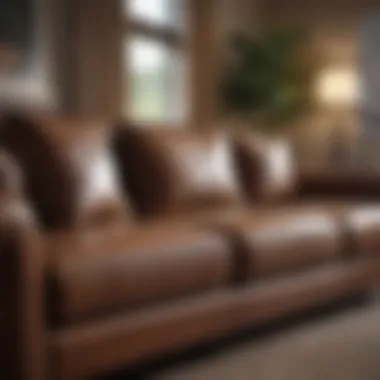
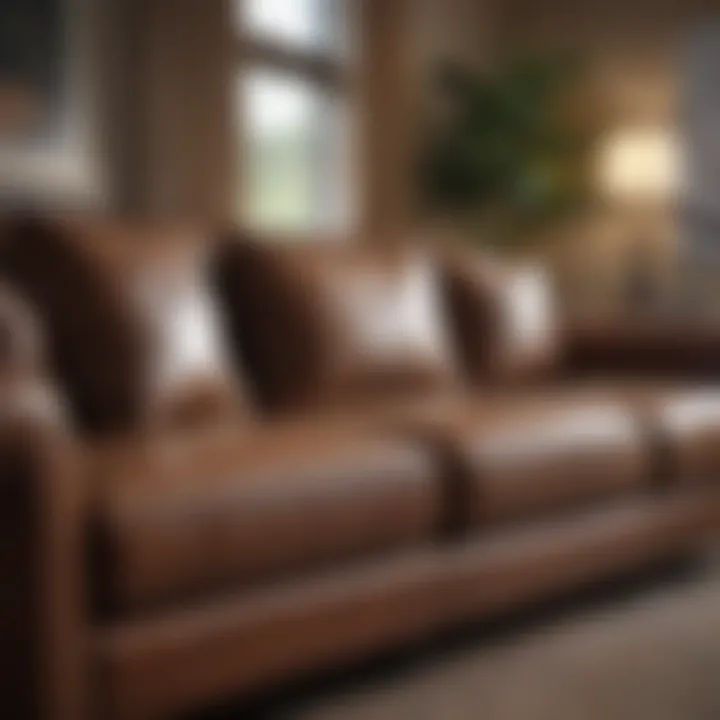
Once the couch is wiped down, conditioning leather is paramount. Leather can dry out over time, leading to cracks and an overall dull appearance. Using a dedicated leather conditioner can help restore its moisture and suppleness. After cleaning, allow the couch to dry completely before applying any conditioner. Follow the manufacturer’s instructions, but in general, a small amount goes a long way.
Apply the conditioner with a soft cloth, working it into the leather in circular motions. This not only nourishes the leather but can also enhance its natural shine, making it look richer and fresher. If unsure about the product suitability, always test it on an inconspicuous area first.
Avoiding Common Mistakes
Cleaning leather and faux leather might seem straightforward, but pitfalls abound. One major mistake is using harsh chemicals or household cleaners meant for general surfaces. These can strip away the natural oils, leading to damage. Similarly, never use excessive water; leather absorbs moisture, which can lead to mold growth if it doesn't dry properly.
Another mistake is neglecting to regularly clean your couch. Dust and grime can build up quickly, especially in homes with pets or young children. As a checklist for care, consider the following:
- Avoid heat sources: Placing your couch near radiators or heaters can dry leather out fast.
- Keep it away from sunlight: Prolonged exposure can lead to fading.
- Don't forget to treat stains promptly: The quicker you act, the easier it is to prevent lasting marks.
"A stitch in time saves nine; a little cleaning goes a long way in protecting your investment."
In summary, cleaning leather and faux leather couches goes beyond giving them a quick wipe. It's about understanding the material's needs and providing the right solutions for long-term care. Engaging with these simple yet effective practices will not only keep your couch looking great but will also enhance your overall living space.
Dealing with Specific Stains
Couches can often be a magnet for spills and stains, making the ability to handle specific types of blemishes crucial. Different stains, such as those from coffee, ink, or food, each require tailored approaches to effectively remove them without causing further damage. Not only does prompt attention to these marks help maintain the appearance of your furniture, but it also contributes to a healthier living environment by reducing allergens and unpleasant odors. Let’s dig in to see how to tackle each of these stains effectively.
Coffee and Tea
Coffee and tea spills are commonplace in many households, given how often these beverages are enjoyed. The first step in combatting such stains is to act quickly. Blot the area gently with a clean cloth or paper towel to absorb as much liquid as possible. Rubbing can set the stain deeper into the fibers, which complicates removal.
Here’s a useful method to treat coffee stains:
- Mix a solution of one tablespoon of dish soap and two cups of warm water.
- Dampen a cloth with this solution and apply it directly to the stain, gently dabbing it around the edges and working toward the center.
- Continue blotting with a dry cloth until the stain is lifted, rinsing the cloth often to avoid spreading the stain.
For tea, a similar approach works, but consider adding a bit of vinegar to the mix. Vinegar's natural acidity helps to break down the tannins found in tea, making it just right for treating those pesky stains.
Ink and Colorant Stains
Ink stains can often seem more formidable than they truly are. The key here is not to panic. Similar principles apply when dealing with ink as with other stains: the quicker you act, the better. Do NOT use water, as it can cause the ink to spread, exacerbating the issue.
Instead, follow these steps:
- Use rubbing alcohol or hand sanitizer. Apply a small amount with a cotton ball or cloth.
- Gently blot the stain from the outside in to prevent it from spreading.
- You should see the ink start to lift onto the cotton. Repeat until the stain has faded.
After lifting the stain, clean the area with mild soap and water to remove any residual alcohol, then allow it to dry naturally.
Food and Grease
Food stains, particularly those with grease, require prompt and careful attention. Grease can settle and be difficult to eradicate if not dealt with swiftly. To start, sprinkle a light dusting of cornstarch or baking soda over the area and let it sit for about 15 minutes. This helps absorb excess oil.
Once that’s done, here is a simple remedy:
- Mix a tablespoon of dish soap with two cups of warm water.
- Use a sponge to dab the mixture onto the stain, starting from the edges.
- After it dissolves the grease, follow up with a clean cloth dampened with water to remove soap residue.
Always remember, different materials react differently to cleaning solutions. It’s wise to spot test any cleaning method in an inconspicuous area first to ensure you won’t cause additional damage.
Handling these specific stains might seem daunting, yet with the right techniques, such minor setbacks can be resolved without a hitch.
Drying and Fluffing Your Couch
Drying and fluffing your couch is a pivotal part of the cleaning process that many tend to overlook. When you deep clean, whether through wet methods or steam cleaning, it’s crucial not just to remove dirt and stains but to ensure your couch doesn't develop any unwanted mold or mildew due to dampness. Fluffing, on the other hand, revitalizes the upholstery, ensuring it maintains that fresh, inviting appearance. In many ways, this step is as important as the cleaning itself, as it keeps your furniture looking and feeling as good as new.
Air Drying Techniques
Once you've cleaned your couch, allowing it to air dry properly can make all the difference. Here are some effective air drying techniques that you might want to consider:
- Increase Air Circulation: Open windows or use fans to boost air movement. Stagnant air can trap moisture, leading to musty smells and potential mildew formation.
- Position your Couch Correctly: Depending on where your couch is situated, you might want to move it away from walls or corners. This way, fresh air can reach all sides effectively.
- Use Absorbent Towels: Placing absorbent towels on wet areas can help draw out moisture. Simply lay them over the damp spots for a while, then replace as needed until your couch is dry.
Overall, give your couch ample time to dry naturally. This could take several hours, depending on factors like the material and humidity levels in your environment.
Fluffing Fabric
Fluffing your couch is about more than just aesthetics; it also serves a practical purpose. Here’s how you can fluff your couch effectively:
- Cushion Fluffing: Start by taking individual cushions and giving them a good shake or fluffing them up by hand. This helps redistribute the filling, making them more comfortable and visually appealing.
- Using a Tumble Dryer: For fabric cushions, you can use a tumble dryer on a low heat setting for about 10 minutes. Just pop them in, and they’ll come out fluffed and refreshed. Take care not to overdo it, as heat can damage certain fabrics.
- Regular Maintenance: Don’t wait until your couch looks worn; make fluffing a routine part of maintaining your couch. A quick fluff every month keeps things cozy and inviting.
Fluffing not only enhances the couch's look but also extends its life. Regularly fluffing out those cushions or parts can prevent sagging and keep them looking plump for years to come.
Routine Maintenance Between Deep Cleans
Maintaining your couch doesn't stop at deep cleaning; in fact, doing so regularly can mean the difference between a piece of furniture that lasts and one that deteriorates quickly. Routine maintenance is essential because it helps in avoiding built-up dirt and grime, ensuring the couch always looks its best. Regular upkeep can also minimize the need for extensive cleaning later, saving both time and energy.
Benefits of Routine Maintenance:
- Prolonged Lifespan: Keeping dirt and dust at bay reduces wear and tear on upholstery, extending the lifespan of your couch.
- Improved Hygiene: Regular cleaning can prevent the accumulation of allergens like dust mites, fostering a healthier living environment.
- Enhanced Aesthetics: A well-maintained couch enhances the overall allure of your living space, making it more inviting.
Considerations:
- Frequency: Aim for weekly vacuuming and spot cleaning, plus deeper cleans every few months, depending on usage.
- Allergens: Be mindful of the material of your couch. Some fabrics attract dust more than others, and knowing this can help tailor your cleaning approach.
Regular Vacuuming
Vacuuming is the cornerstone of couch maintenance. A quick vacuum session not only tackles loose dirt and crumbs but also helps lift up microscopic allergens hiding within the fibers. A vacuum with upholstery attachments gets the job done well.
- Technique: Angle your vacuum at 45 degrees while focusing on seams and crevices where debris tends to accumulate.
- Frequency: Make it a habit to vacuum at least once a week, or more frequently if you have pets or young children.
Using Slipcovers and Protectors
Investing in slipcovers or couch protectors can be beneficial, especially for homes with kids or pets. They act as a first line of defense, keeping your couch safe from spills, stains, and daily wear and tear.
- Types of Protectors: Consider options like stretchy slipcovers or removable covers that can be washed easily. Additionally, there are protective sprays that add a layer of defense against stains.
- Style Choices: Many slipcovers come in various colors and patterns, allowing you to refresh the look of your couch without the need for a complete replacement.
Immediate Spill Treatment
Accidents happen, and it’s crucial to act swiftly when they do. The faster you address spills, the less likely they are to leave a stain.
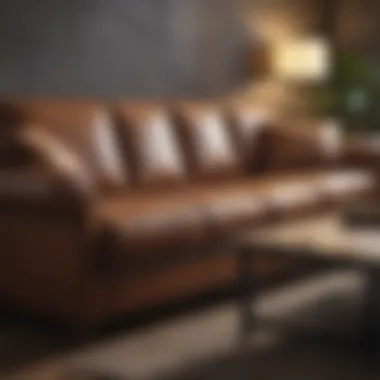
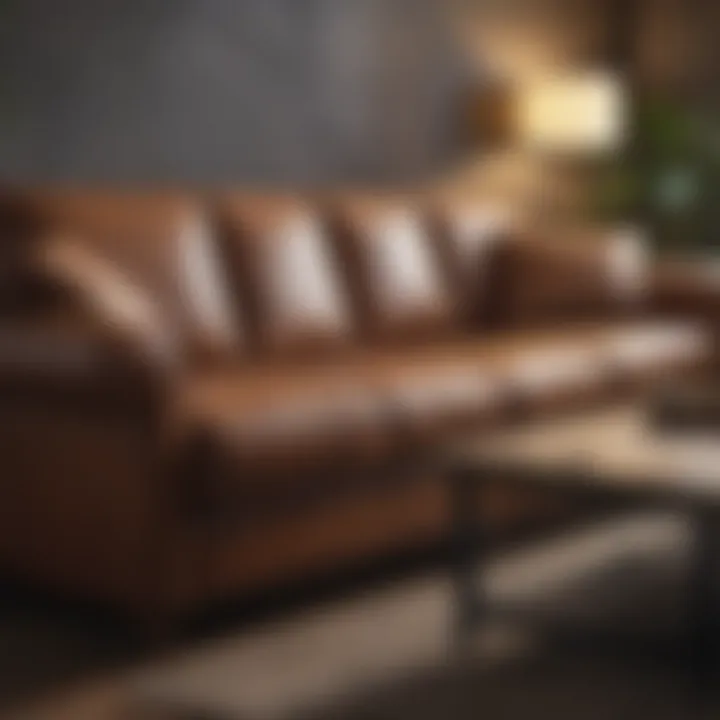
- Blot, Don’t Rub: Always start by blotting the spill with a clean cloth. Rubbing can spread the stain further and push it deeper into the fabric.
- Spot Cleaner Notion: Keep a suitable spot cleaner handy at home, particularly one that is safe for your couch’s material. Be sure to follow the manufacturer’s instructions for the best outcome.
"An ounce of prevention is worth a pound of cure."
Daily steps in couch maintenance may seem trivial, but collectively, they play a pivotal role in preserving your couch's integrity. This attention to detail can turn a mundane piece of furniture into an enduring staple in your home.
The Impact of Lighting on Cleaning Efficacy
When it comes to deep cleaning your couch, you might not think that lighting plays a significant role, but it does. The right kind of light can make a world of difference in how well you can see the dirt, stains, and allergens lurking in the fibers of your upholstery. Having adequate lighting during the cleaning process ensures you don’t miss a spot, ultimately leading to a more thorough and effective clean.
Considerations about lighting also include the types of cleaning agents you may use and their interaction with the materials of your couch. For instance, some solutions require a specific lighting condition to be most effective, enhancing their capabilities. Whether you’re battling a stubborn stain or simply doing a routine clean, understanding how light affects your efforts is crucial.
Natural Light Considerations
Natural light can be your best friend when tackling dirt or grime on your couch. Sunlight tends to reveal colors and textures better than artificial lighting. You may find that a well-lit room floods with daylight can spotlight lingering shadows where dirt hides. Thus, when planning your deep cleaning session, aim for a day when the sun shines bright, ideally between 10 a.m. and 2 p.m.
- Windows Open: Make sure you draw back thick curtains or shades and let the light stream in.
- Positioning: Move your couch near the brightest spot in your home, if possible. Sit in various angles to see where the light hits.
- Color Detection: Natural light helps in determining fabric colors and what stains need to be addressed.
"You can't clean what you can't see; sunlight brings to light hidden dirt and stains!"
Artificial Lighting Techniques
If you find yourself without the luxury of good weather or enough sunlight, artificial lighting can still serve you well if used wisely. The key is to mimic the qualities of natural light as closely as you can. This way, you'll have a clearer view of stains and smudges that need attention.
- Bright LEDs: Utilize bright white LED bulbs, as they offer a spectrum closer to natural daylight.
- Overhead Lights and Spotlights: Use ceiling-mounted lights in conjunction with portable lamps that can be directed to dark corners or areas of the couch. This layered lighting can considerably increase visibility, especially on larger furniture pieces.
- Color Temperature: Choose bulbs with a color temperature of around 5000 to 6500 Kelvin for the best results that imitate daylight.
In sum, lighting isn’t just for ambiance; it’s an essential tool in ensuring your couch cleaning process is effective and thorough. Whether the sun's out or you're entirely reliant on artificial light, the considerations mentioned will set you on the right path toward achieving a spotless couch.
Identifying and Addressing Allergens
In the quest for a cleaner living space, the topic of allergens often comes into play, especially when it comes to one of the most utilized pieces of furniture in any home—couches. This section covers the significance of recognizing and addressing allergens, shedding light on the types found in upholstery and how they impact our health.
Regular deep cleaning not only preserves the aesthetic appeal of your couch but also plays a vital role in maintaining a healthy environment by minimizing allergens such as dust mites, pet dander, and mold spores. Ignoring these pesky invaders can lead to a host of allergic reactions, from sneezing and coughing to skin irritations. Consequently, knowing how to identify and eliminate these allergens can vastly improve your comfort and overall well-being.
Dust Mites and Other Allergens
Dust mites are minute creatures that thrive in warm, humid environments, and your couch can unwittingly become their cozy abode. Historically, they feed on dead skin cells, which naturally fall off our bodies; this is where couches become a prime target, acting like a banquet table for these tiny nuisances.
"Dust mites are so small, they can easily hide in the fibers of your couch, making it difficult to spot them, let alone eliminate them!"
Besides dust mites, other allergens, like pollen, mold, and pet dander, can also settle into the upholstery. These allergens can become airborne, particularly when sitting on or moving about the couch. For those with allergies or respiratory issues, this might lead to aggravation of symptoms and discomfort.
To tackle dust mites and similar allergens effectively, regular vacuuming is essential. Using a vacuum with a HEPA filter can significantly reduce the amount of allergens present. Moreover, consider using mattress and pillow covers that are dust mite-resistant.
Choosing Allergy-Safe Products
When it comes to cleaning, the products you choose directly affect the allergen levels in your home. Conventional cleaning supplies often contain strong chemicals that might trigger sensitivities, so opting for allergy-safe alternatives is prudent. Natural cleaning solutions, such as vinegar and baking soda, not only reduce your exposure to toxins but also tackle the hygiene aspect effectively.
For those keen on commercial products, look for items labeled as hypoallergenic or specifically designed for allergy sufferers. It's a good idea to read labels and opt for scents that do not irritate. Many essential oil-based products offer both cleanliness and pleasant aromas without harsh chemicals.
Also, consider incorporating allergen-reducing agents into your cleaning routine. Air purifiers, for instance, can help filter out harmful particles from the air, particularly in high-traffic areas around your couch.
In summary, understanding allergens and the importance of identifying them is the first step in ensuring a healthier living environment. Implementing practical solutions and selecting the right products can go a long way in maintaining a couch that not only looks good but promotes well-being.
Seeking Professional Cleaning Services
When it comes to deep cleaning your couch, many homeowners often find themselves at a crossroads. While DIY methods can work wonders, there are instances when enlisting a pro may be the best route. Understanding the importance of professional cleaning services can make a significant difference in not just the cleanliness but also the longevity of your beloved couch.
One clear benefit of professional cleaning is the expertise they bring. After all, these specialists have seen it all; from stubborn stains to different fabric types, they know which methods and solutions are effective for each situation. In contrast, a well-meaning attempt by an inexperienced homeowner may lead to damage or inadequate cleaning – a bit like using a sledgehammer when a scalpel will do.
Moreover, professional cleaners often utilize industrial-grade equipment that most homeowners wouldn't have access to. This means they can tackle situations many of us wouldn’t even think possible. For example, they might use hot water extraction methods that can penetrate deeper into the fabric than typical home cleaning methods, ensuring that all dirt and allergens are completely eradicated.
"Investing in a professional service for your couch can save you time, effort, and, ultimately, your furniture's lifespan."
Additionally, there's a safety element involved. DIY cleaners, particularly those made with harsh chemicals, can be risky if not properly diluted or applied. Professionals know the ins and outs of these products and can ensure that your couch is not only clean but also safe for your family and pets. However, understanding when to hire a professional can help you make informed choices.
When to Consider Professional Help
Several signs might indicate that it’s time to bring in the pros. If your couch has deep-set stains from food, coffee, or spills that won't budge despite your best efforts, calling a professional could save the fabric. On the other hand, if you notice a lingering odor that won't dissipate, that, too, suggests it might be time to seek help.
Another consideration is the material your couch is made from. For instance, delicate fabrics like silk or specialty leathers may require specialized care that only a professional service can provide. Moreover, if your household includes allergenic concerns, such as pets or asthma sufferers, professional cleaning can help eliminate dust mites, pollutants, and allergens that can accumulate over time.
Selecting a Credible Service
If you’ve made the decision to hire someone, choosing the right cleaning service is critical. Start by seeking out recommendations from friends or family members who’ve had experiences with couch cleaning services. Online reviews can also provide valuable insights into how a company treats its customers and the quality of its work.
Look for services that have certifications or memberships in relevant industry associations; this often indicates adherence to best practices. When reaching out, don’t shy away from asking questions about their methods and equipment. A reputable service will provide clear answers about how they will clean your couch and what products they use.
Finally, ensure they provide a guarantee. A reputable company will stand behind its work and be willing to return if you're not satisfied with the results. The peace of mind knowing that your couch is in expert hands is worth every penny spent.
In summary, while it’s entirely possible to undertake couch cleaning yourself, professional services bring in invaluable expertise, advanced techniques, and healing that those carpets of your living room truly require sometimes.
Final Thoughts on Couch Care
Taking care of your couch isn't just about aesthetics; it also plays a crucial role in your overall living environment. The state of your upholstery reflects not only your personal hygiene but also contributes to the comfort and well-being of everyone in your space. When you spare a few moments on couch maintenance, you’re investing in much more than just furniture.
Long-Term Benefits of Couch Care
Couches endure a lot over the years: stubborn stains from spilled drinks, pet hair, and the occasional foot odor may all take their toll. Ignoring these issues can lead to deeper problems, including permanent staining or fabric wear. Addressing these concerns promptly means your couch can retain its charm and functionality longer. Here are some benefits of diligent couch upkeep:
- Extended Lifespan: Regular cleaning and maintenance can keep your couch looking good for years.
- Hygiene: Couches can harbor dust mites, bacteria, and allergens, impacting air quality. Keeping them tidy reduces these risks.
- Aesthetic Appeal: A clean couch is a welcoming sight in your home and enhances the overall ambiance.
Considerations for Optimal Care
While the importance of maintaining your couch may seem clear, knowing what steps to take can be a puzzle. Here are a few critical considerations:
- Know Your Material: Different fabrics require different care approaches. Mix and match too vigorously, and you could damage your upholstery.
- Cleaning Frequency: How often should you pull out the vacuum? It depends on several factors, such as your household activity level and whether you have pets. A good rule of thumb is to vacuum at least once a week.
- Choosing Products Wisely: Whether you lean towards homemade cleaning solutions or brand-name products, be mindful of ingredients. Some can be too harsh, leading to discoloration or damage.
"By investing a little time and effort into your couch care, you’re not only enhancing the comfort of your home but also fostering a healthier living space."
Summary of Key Points
- Understand the various upholstery materials and their unique cleaning needs.
- Prioritize routine cleaning to prevent damage and discoloration.
- Don’t hesitate to reach out for professional help if you encounter overwhelming stains or structural damage.
Couch care doesn’t have to be daunting. With the right knowledge and approach, you can turn a chore into a simple practice that yields delightful results.















